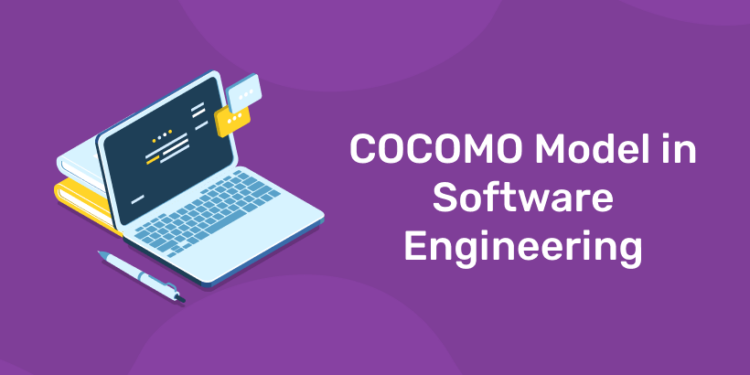The design and development of software for computer systems and applications is the focus of the computer science branch known as software engineering. Applications that include computing utilities and functions make up software for computer systems. Applications software includes web browsers, database programs, and other user-oriented tools. Software engineers have a thorough understanding of programming languages, software development, and computer operating systems and apply engineering principles to the creation of software.They can construct specialized solutions for specific clients by applying these engineering concepts to every stage of the development process, from requirements analysis to the software process. A software engineer can create a wide range of software, including operating systems, video games, middleware, enterprise applications, and network control systems. Technology advancements and the emergence of new fields of specialty keep this industry moving forward quickly.
Learn to code from industry experts! Enroll here
Before designing, testing, and building the computer program to achieve those goals, a software engineer frequently evaluates the requirements of a client. They are experts in computing systems, software architecture, and recognizing hardware limitations. Because of how sophisticated and complicated the process is, instructions for the computer are written using diagrams, flowcharts, and algorithms. It is typically the job of a computer programmer to translate these instructions into computer language (coding/programming).To properly train, test, and debug software to the finished product, software engineers must also have strong interpersonal skills and be able to engage with users. They frequently participate in all phases of the development of the program, including the design, testing, development, training, and support phases.
COCOMO Model in Software Engineering
Software Engineering Economics by Dr. Barry Boehm established the concept of constructive cost modeling. The name “COCOMO 81” is currently the standard for this type. It is used to calculate the amount of development work required for a project and refers to a collection of models. The estimation of a system’s lines of code and the time serve as the foundation for COCOMO. COCOMO has also taken into account factors such as project characteristics, hardware, production evaluation, etc. Software managers may now understand why the model generates the estimations it does because of the model’s increased transparency. Additionally, a waterfall model lifetime was originally based on the baseline COCOMO. For cost estimates that span a wider scope and go beyond the bounds of conventional software development, work is done on several COCOMO models concurrently. For the COCOMO model to determine the quality of any software product, two basic parameters, such as effort calculation and development time, are required:
- Effort Calculation: The number of people needed to accomplish the work can be used to compute efforts. It is computed using the person-month unit.
- Development Time: The amount of time needed to do the assignment. It is determined using time units like weeks, days, and months. It depends on how much work is required; if there are more people, the development time will undoubtedly be short.
Different kinds of cocomo models have been put out to determine the accuracy of software products and to compute cost estimates at various levels. These levels are also influenced by the methods used to create precise software products. The COCOMO model methodologies classify software projects into three categories:
- Organic: If the development team is small, the issue at hand is not complicated, and a previous solution has been found, the software development project falls within the organic category. The team members’ minimal experience is also taken into account. Small data processing systems, rudimentary inventory management systems, and business systems are a few examples of projects that can be organic.
- Semi-Detached: Semi-detached systems are a type of software project that falls somewhere between organic and embedded systems. It has a middle-sized development team, a mix of personnel with and without expertise, and a project complexity that is neither excessively high nor low. There are a few known and a few unknown issues with this project that have never been encountered before. Database Management System (DBMS), a novel, unproven operating system, and a challenging inventory management system are a few examples of such initiatives.
- Embedded: An embedded system is the most complex project, needing a sizable team of knowledgeable individuals. The team members must possess the necessary creativity to build intricate models. Such initiatives include things like ATMs, sophisticated banking systems, and models of air traffic.
Learn Coding in your Language! Enroll Here!
COCOMO Model Types
Three forms that are more and more precise and intricate makeup COCOMO. Any of the three forms can be modified to meet our needs. Through KLOC, Boehm had set up many expressions to calculate effort and development time (Kilo line of code). Because there aren’t enough variables, all of these computations are generally correct but not exact. These COCOMO model varieties include:
- Basic COCOMO Model
- Intermediate COCOMO Model
- Detailed COCOMO Model
Let’s examine these types in greater depth.
- Basic COCOMO Model
The Basic COCOMO Model, which is the initial level, can be used to quickly and roughly calculate the cost of the software. This is due to the model’s exclusive reliance on source code lines and constant values gleaned from various software project types, as opposed to other variables that have a significant impact on the software development process as a whole. It is necessary to estimate the amount of work needed to develop in the three different modes of development—organic, semi-detached, and embedded. The following formulas give the fundamental COCOMO estimate model:
- E = ax(KLOC)b
- D = c*(Effort)d
- P = effort/time
Where,
E is the amount of effort in person months.
D is months of development duration.
P is the overall number of people needed to complete the project.
- Intermediate COCOMO Model
The Intermediate COCOMO model is an expansion of the Basic COCOMO model that takes into account several cost factors to increase the accuracy of the cost estimating model. The estimation approach uses a collection of “cost-driving attributes” to determine how much the program will cost. The connection provides the expected effort and scheduled time:
- E = a*(KLOC)b *EAF PM
- D = c x (Effort)d
Where,
E is the total number of person-months needed for the project (MM).
KLOC is the number of lines of code for the project in Kilobytes.
a,b is the software project’s constant parameters.
EAF is the parameter value of several cost driver parameters multiplied to provide an effort adjustment factor. Ideal has a value of 1.
- Detailed COCOMO Model
Every aspect of the Basic COCOMO and Intermediate COCOMO strategies for each software engineering process is included in the model. The project’s individual development phases (analysis, design, etc.) are taken into consideration by the model. For each stage of the project, multipliers are used. It’s a sophisticated mode. It contains additional variables that affect software initiatives and provides more precise projections. The entire software is divided into many modules in this, and each module’s effort is estimated using COCOMO before being added to the total effort. For instance, each stage of the Waterfall Model’s development will involve a comprehensive COCOMO performing cost estimation. The Six phases of the detailed model are:
- Planning and Requirements
- System Design
- Detail Design
- Module code and test
- Integration and Test
- Cost Constructive Model
The price of each subsystem is assessed independently in the Detailed COCOMO Model. The final estimate’s error margin is decreased using this method.
Learn to code from industry experts! Enroll here
Conclusion
Although neither of these figures is exact, they do provide a general notion or projection of the project’s cost and completion time. When taking into account these elements, the model is useful and maintains communication between the client and the developers. It does, however, have drawbacks. For instance, it doesn’t take into account things like customer participation, knowledge, and other aspects. Additionally, because it depends on several variables, the project as a whole is impacted if the actual time required exceeds the estimate.
Want to become a star in the Web development field? Try Entri app’s Web development courses. Click here











